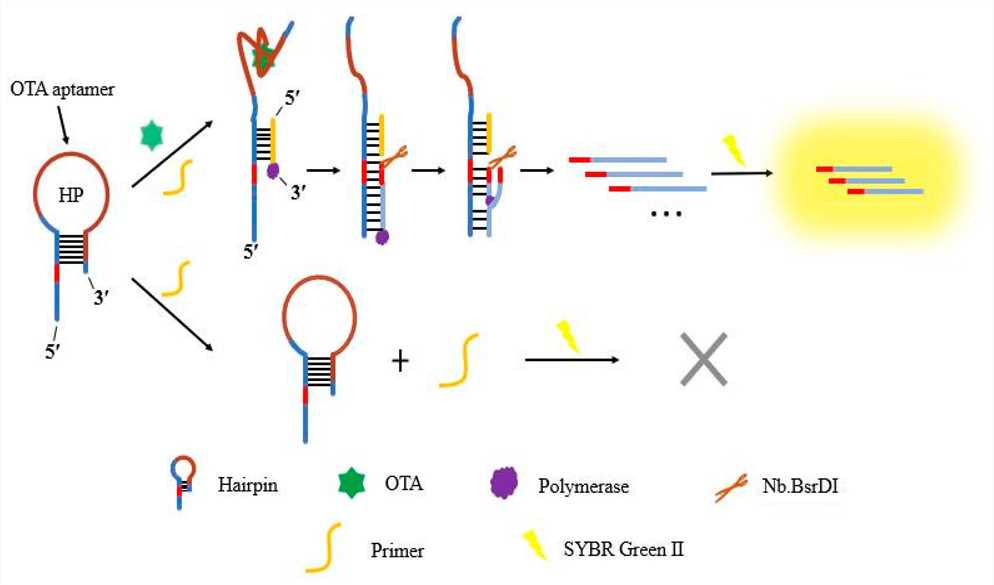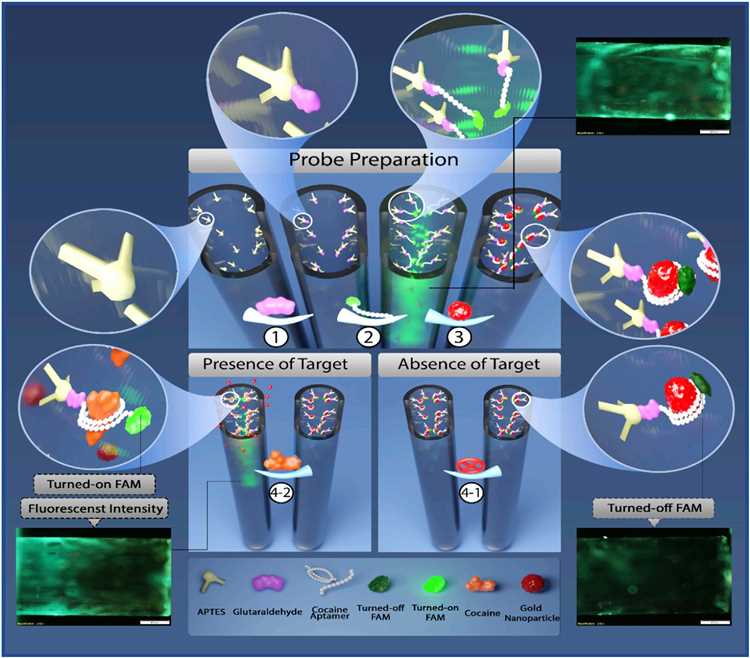Fluorescent biosensors have received great attention due to their high sensitivity and easy operations. On the basis of electron transfer (ET), charge transfer (CT), and energy transfer (ET) mechanisms, different organic molecules, conjugated polymers, and inorganic quantum dots (QDs) have been developed as fluorescent probes for biosensing.
It is well-known that fluorescent emissions of many fluorophores are quenched at high concentrations or in an aggregated state (ACQ), due to the formation of such detrimental species as excimers and exciplexes. In 2001, an intriguing aggregation induced emission (AIE) phenomenon exactly opposite to the ACQ effect was reported. Different from the notorious ACQ fluorophores, AIE-active fluorophores are non-emissive in the molecularly dissolved states, while give highly fluorescent emission when they are in the aggregate states. Typical AIE dyes are 9,10-distyrylanthracene (DSA), silacyclopentadiene (silole), tetraphenylethene (TPE) and their derivatives. AIE dyes with positive charges have been testified to be able to strongly bind to DNA strands. So far, the concept of AIE has been developed to be a new emerging signal principle for the design of fluorescent probes.
Motivated by the features of AIE dyes and aptamers, scientists proposed different aptasensors by the direct use of aptamer sequences. The AIE-based aptasensors utilize ssDNA aptamers as recognition elements and AIE-active probes as fluorescent indicators.
Fluorescent Aptasensor Based on AIE Probe and Graphene Oxide
Due to the strong adsorption and fluorescent quenching ability, graphene oxide (GO) was identified as an efficient platform for fluorescent biosensing. ssDNA could adsorb on the surface of GO, whereas it desorbed from the surface of GO when hybridized with its complementary strand and formed double stranded DNA (dsDNA) or hybridized with its targeted protein and formed G-quadruplex DNA (G4). The sensing mechanism is shown in Figure 1.
Fluorescent Aptasensor for OTA Detection
An AIE dye-based aptasensor, enabling label-free and turn-on detection of mycotoxin. DASI dyes were chosen for construction of the aptasensors. The label-free analysis of ochratoxin A (OTA) could be achieved via the synergetic utilization of AIE dyes and enzymatic digestion process. The digestion process could contribute to a signal to background ratio (S/B) of 1.71 for OTA detection. Further, contributed to the specificity of aptamers, this aptasensor could strictly identify OTA from other analogues.
 Fig.1 Scheme of OTA fluorescent aptasensor based on hybridization chain reaction.1, 3
Fig.1 Scheme of OTA fluorescent aptasensor based on hybridization chain reaction.1, 3
Fluorescence Aptasensor for Cocaine Detection
A label-free radiometric fluorescence aptasensor has been developed for the rapid detection of cocaine. The fluorescent aptasensor is composed of a non-labeled GC-38 cocaine aptamer which serves as a basic sensing unit and two fluorophores, ATMND (2-amino-5,6,7-trimethyl-1,8-naphthyridine) and SGI (SYBR Green I) which serves as a signal reporter and a build-in reference, respectively. The detection principle is based on a specific cocaine mediated ATMND displacement reaction and the corresponding change in the fluorescence ratio of ATMND to SGI.
 Fig.2 Schematic design of aptasensor for cocaine detection.2, 3
Fig.2 Schematic design of aptasensor for cocaine detection.2, 3
AIE dyes serve as powerful tools for constructing label-free and turn-on nucleic acid probes. Enormous aptamer probes have been designed to recognize proteins, antibiotics, virus and mycotoxins. Taking good analytical performances into account, the fluorescent aptasensor could be extended to detect various targets and will have great potential to be used in POC screening in the near future. Creative Biolabs provides fluorescent dyes-based aptasensor development service for global clients according to specific demands. If you are interested in our services, please feel free to contact us for more information.
References
- Guo, Wei, et al. "A Novel Fluorescent Aptasensor Based on Real-Time Fluorescence and Strand Displacement Amplification for the Detection of Ochratoxin A." Foods 11.16 (2022): 2443.
- Zamanian, Javad, et al. "An ultrasensitive detection platform for cocaine: Aptasensing strategy in capillary tube." Frontiers in Chemistry 10 (2022): 996358.
- Distributed under Open Access license CC BY 4.0, without modification.
For Research Use Only.

